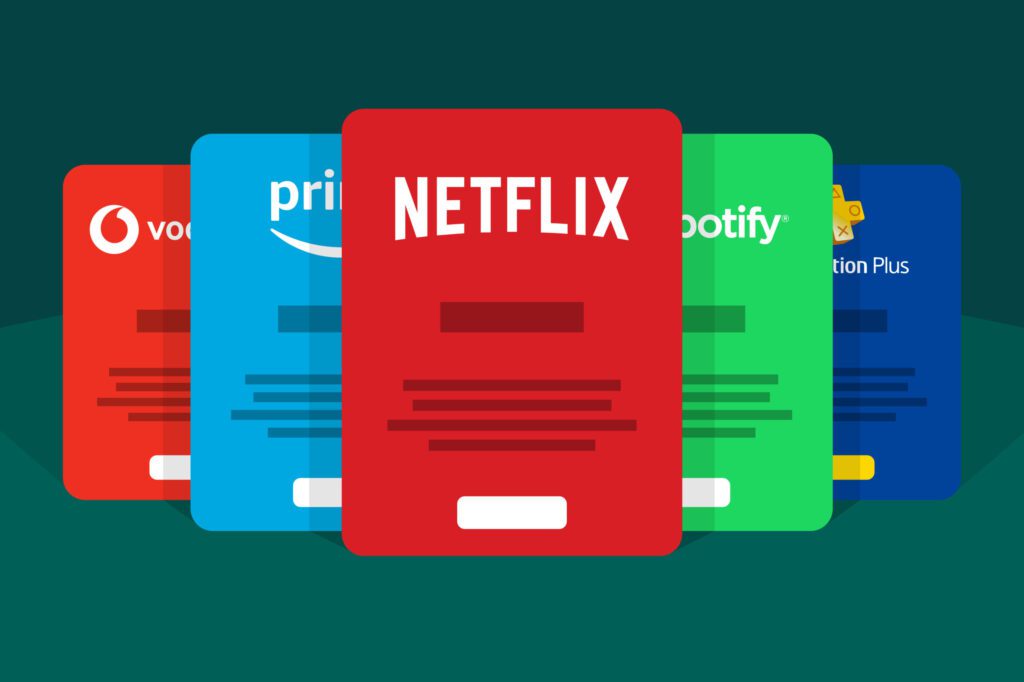Starting with a look at company valuations, you ever see some of these companies’ valuations? It is becoming increasingly common for company valuations to hit the 1 billion dollar mark, and some are able to do it within five years from launch. What is it that these companies are doing right and how can we learn this art of hyper-scaling top-line revenue. Simple. It’s called the subscription economy. If we were to take an example of two companies, Company A and Company B. Both have a top-line revenue of $100 Million. However, Company A has to go out and sell more product and find new customers every time they want to make a sale. On the other hand, Company B operates on a subscription model where every month customers are paying $14.99. You would expect the worth of both of these companies to be pretty similar as they have the same top-line revenue. According to an article on Forbes, Company B is estimated to be worth almost eight times as much as Company A solely on the bases that its customers are reoccurring. But this one, it’s subscription—every month people are paying. This leads us to the broader influence of subscriptions in consumer spending.
On average, you and I spend $237 per month in subscription model products, that’s $3000 a year. According to McKinsey and Company, subscription model products in the last seven years have increased by 350%. The question becomes was this always the case? If not, when did this surge in subscriptions start? It’s clear to see that this rise didn’t just happen overnight.

According to McKinsey and Company, only one percent of all companies offered some sort of subscription service in the year 2000. That quickly rose to five percent. This number quadrupled within the next ten years and is estimated to be at fifty percent by 2025.

What’s also interesting to note is not only did the amount of subscriptions offered by a company increase, but so did the average number of subscriptions bought by a customer. According to the conference board, the average number of subscriptions jumped from 2.2 in 2000 to almost doubling within the next ten years. Furthermore, within the next thirteen years, the number of subscriptions doubled once again, clearly indicating no intent to plateau. These trends in adoption set the stage for understanding specific brand models offered by the likes of Netflix and Spotify.
Netflix got started in 1999. Spotify in 2008. Amazon Prime in 2005. Netflix is $7.99 a month, Spotify $9.99, and Amazon Prime $7.99. Let’s take a look at the number of subscribers. Netflix has over 240 million, Spotify has over 500 million, obviously that includes both free and paid, and Amazon Prime is estimated to be over 200 million.
But the real impact of these services goes beyond subscriber count—it’s about the revenue they generate.
- Netflix:
- 1998 — $1.8 Million
- 1999 — $14.4 Million
- 2000 — $49.3 Million
- 2023 — $32 Billion
- Spotify:
- 2010 — $155 Million
- 2011 — $330 Million
- 2022 — $12.35 Billion
- Amazon:
- 2004 — $6.9 Billion
- 2005 — $14.1 Billion
- 2022 — $350 Billion
Although Amazon started in 1995, they did not adopt a subscription model until 2005 when they introduced Amazon Prime. It’s clear to see the effect this introduction had as Amazon more than doubled its revenue that year.
But it’s not just these giants that thrive on subscriptions; there are countless other industries as well. These other Industries include:
- Software: Adobe Creative Cloud and Microsoft.
- Beauty: Birchbox and Ipsy.
- Fashion: Stitch Fix and Rent the Runway.
- Meal kits: Blue Apron or Hello Fresh.
- Fitness: Peloton or Beachbody on Demand.
- Books: Audible or Kindle.
- Wine: Wink and Vinebox.
- Coffee: Trade Coffee and Atlas Coffee.
- Home Goods: Grove Collaborative and Bespoke Post.
- Pet supplies: BarkBox and KitNipBox.
- Health and Wellness: Headspace and Calm.
- Personal Development: MasterClass and Blinkist.
- Language Learning: Rosetta Stone and Duolingo.
- Crafts and DIY: Craftsy and Crafters Box.
- Education: Udemy and Coursera.
Why do these businesses succeed with this model?
The reasons this models completely transform industries is by having a recurring revenue. Year-on-year, the business does not have to go out and chase new customers and sell them a new product to be making a profit. We’re seeing a paradigm shift when it comes to consumer ownership. Businesses are finding that selling a subscription isn’t just more convenient for the consumer, it’s also much better for the company in the long term.
Secondly, you have scalability. In the example we used in the beginning, if Company A sold to 100 customers in the first month and then to another 100 in the second month, they had 200 customers over two months. However, if Company B sold subscriptions to 100 customers in the first month, and then 100 customers in the second month, they had 300 customers over two months and the previous 100 are reoccurring. This provides businesses an incentive to introduce subscription models as they are able to scale at a much faster pace with the same amount of new customers.
While these advantages seem promising, they come with challenges that must be addressed. With any businesses there are four very important aspects they must tackle to remain relevant within the market. Firstly is Churn. This means the businesses has to keep showing up and keep producing a product or service. Secondly, there is competition. This simply refers to staying on par with your competing businesses and essentially keep innovating. Lastly, compliance. This is about meeting the guidelines and the expectations the business set when initially getting customers to sign on. Retaining existing customers is just as important as finding new ones in a subscription economy and this would not be possible if the business keeps producing at a lower standard than what they first promised.
The rise in such a disruptive model in such a short period of time is a testament to the fact that the economy is always changing and in order for a business to be successful, it must innovate and adapt.






